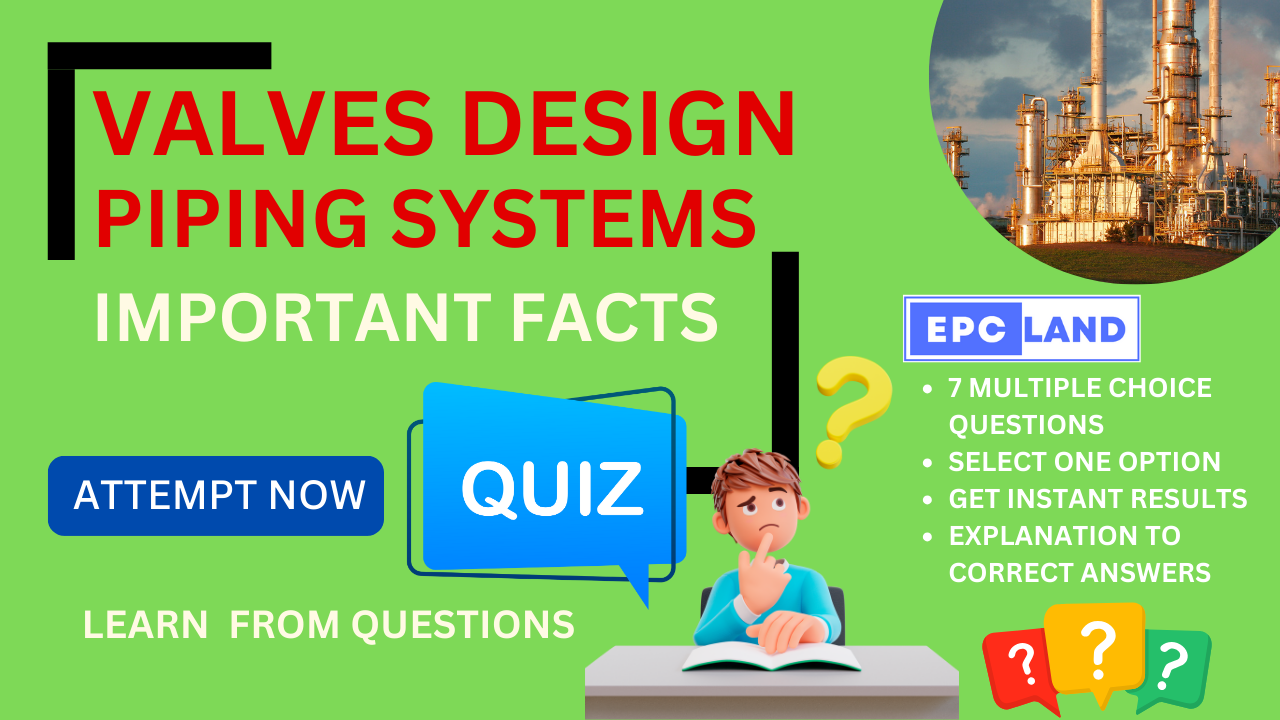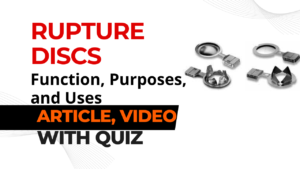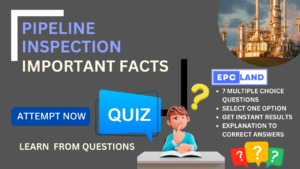I. Valve Design: Valve Bonnet Requirements
What type of bonnet is specified for steel Gate, Globe & Check valves in Hydrocarbon and utility service up to 600# rating and 2″ and larger size?
Explanation: Up to 600# rating, 2″ and larger size steel Gate, Globe & Check valves in Hydrocarbon and utility service shall have bolted bonnets.
II. Flange Requirement for Flanged End Valves in Valve Design
What is the requirement for flanges on flanged end valves?
Explanation: Flanged end valves shall have flanges cast/forged integral with the body. Welded on flanges are not permitted.
III. End Requirements for Socket Weld Valves in Valve Design
What standard is referenced for the ends of socket weld valves?
Explanation: The ends of socket weld valves shall be in accordance with ASME B16.11.
IV. Valve Port Design
What design is specified for all valves?
Explanation: All valves shall be of Full port design.
V. Locking Arrangement in Valve Design
What provision must be supplied with all valves, and what is the locking pad requirement based on?
Explanation: All valves shall be supplied with the provision of Locking arrangement, and the Locking pad requirement will be as per the Latest P & I drawings.
VI. Valve Stem Material while Valve Design
What materials are specified for valve stems?
Explanation: Valve stems shall be one-piece design and made from Forged or Bar material.
VII. Handwheel Selection in Valve Design
How are handwheels selected, and what are the specified limits for operating forces?
Explanation: Handwheels shall be selected to limit the normal operating forces to less than 80 pounds and the seating/unseating forces to less than 120 pounds at the rim of the handwheel. Handwheels shall not exceed 24 inches outside diameter.
Table of Contents
Don’t miss the Course on Effective Isometrics Management: Check Now
Enrollment Link
Recommended courses (Published on EPCLand)
- Complete Course on Piping Engineering
- Basics of Piping Engineering
- Piping Layout Engineering
- Piping Material Engineering
- Piping Stress Analysis
- Material Requisitions
- Piping Material Specifications
- Valve Material Specifications
- Plant Design & Layouts-OISD 118
- Isometric Management
Library of Technical Articles
Don’t miss out the collection of 15+ articles on following topics:
- Basics of Oil and Gas Industry
- Valves
- Testing
- Tank
- Piping Bulk Items
- Pipe
- Metallurgy
- Piping Materials
- Layout
- Instrumentation
- Heat Exchanger
- Type of Contracts
- Codes and Standards
- ASTM Standards
- Articles on Piping Specialty Items
Video details of Complete Course on Piping Engineering
Why Enroll in the EPCLand
Proven Track Record– PTR
Activities & Achievements before launching EPCLand
- Published more than 50+ short courses
- 3000+ Enrolments
- More than 3,500,00 Minutes of watch hours in the last 2 years
- 4000+ Students in 100+ Countries
- Rating of 4+ out of 5
- 1000+ YouTube Videos
- 8K+ Subscribers
What Students will Learn
- Codes & Standards of the Energy Sector
- Piping Material Engineering
- Piping Layout Engineering
- Stress Analysis
Interesting facts
- All the published courses have been developed by Industry Experts with more than 2 decades of experience
- Content is based on Practical experience and real-time problems.
- Content is designed and organized in such a manner that it can be easily grabbed.
- Complete website, Blogs and Quiz sections are Planned, Designed and published by myself (About me: Atul Singla)
- Complete flexibility of Time & Location, Students can access the content from anywhere & anytime
- Moreover, once enrolled, the content can be access as many times as you want, which helps in understand the fundamentals in a better way.
Conclusion
In conclusion, our courses are meticulously crafted by industry experts with over two decades of hands-on experience. The content is rooted in practical knowledge, addressing real-time problems. The material is thoughtfully designed and organized for easy comprehension. Every aspect, from the website to blogs and quizzes, has been planned, designed, and executed by Atul Singla, ensuring a comprehensive and seamless learning experience. With the flexibility of accessing the content at any time and from any location, students have the freedom to learn on their terms. Furthermore, enrollment grants unlimited access, allowing learners to revisit the material as often as needed, fostering a deep understanding of the fundamentals.



